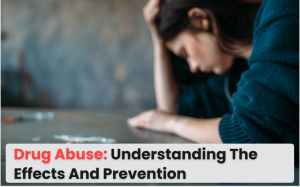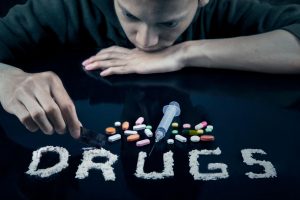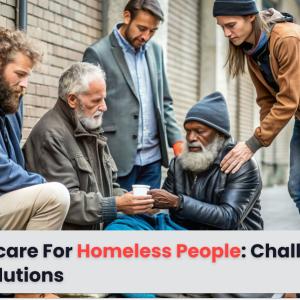
Drug Abuse: Understanding the Effects and Prevention
Drug abuse is a widespread issue that impacts millions of people in the USA and Canada every year. The misuse of legal and illegal substances can lead to devastating physical, emotional, and social consequences. While the fight against drug abuse involves individuals, families, communities, and governments, it is essential to understand both its effects and the preventive measures that can help reduce its grip on society.
The Nature of Drug Abuse

Drug abuse occurs when an individual uses substances like alcohol, prescription medication, or illicit drugs in harmful ways. While some drugs are legal, such as alcohol or prescription opioids, misuse still carries significant risks. Illegal drugs, like cocaine, heroin, or methamphetamines, pose even more immediate dangers.
Abuse can lead to addiction, where the user is unable to control their drug use despite harmful consequences. In many cases, drug abuse is intertwined with mental health disorders, including anxiety and depression, creating a cycle that is difficult to break. This is especially prevalent in regions heavily impacted by the opioid crisis in the USA and Canada, where addiction rates have soared.
The Effects of Drug Abuse
The impact of drug abuse is wide-ranging, affecting both the individual and the community. Here’s a breakdown of the effects:
1. Physical Health Consequences
- Short-term Effects: Depending on the substance, users can experience anything from nausea, headaches, and dizziness to more severe effects like overdose and death. Stimulants can lead to heart attacks or strokes, while depressants can cause respiratory depression. These drug abuse effects can occur with substances that are both legal (like prescription opioids) and illegal (like heroin).
- Long-term Effects: Prolonged drug use damages organs such as the liver, kidneys, heart, and brain. Chronic users of opioids or alcohol may develop irreversible liver damage, while stimulant users may suffer from heart disease and neurological issues.
- Mental Health Decline: Drug abuse severely impairs cognitive functions, leading to memory loss, impaired judgment, and mood disorders like depression and anxiety. Over time, this can escalate into chronic mental health conditions, complicating the treatment for drug addiction and recovery.
2. Social and Economic Consequences
- Family and Relationships: Substance abuse can tear apart families and relationships. It often leads to conflicts, neglect, or even violence. Children growing up in homes with substance abuse are at a higher risk of developing emotional and behavioral issues.
- Workplace and Financial Struggles: People struggling with addiction may find it hard to maintain employment. Their performance suffers, leading to job loss, which can then lead to financial difficulties. The cost of maintaining a drug habit also drains financial resources, furthering the struggle.
- Criminal Activity: Many people who abuse drugs may turn to crime to support their addiction, leading to legal troubles. Drug-related offenses account for a significant portion of the criminal justice system’s workload in both the USA and Canada.
3. Impact on Communities
- Public Health: Drug abuse is a public health issue, with the opioid crisis in North America being one of the most prominent examples. Overdose deaths have surged in recent years, especially in communities hit hard by economic downturns and limited access to health care.
- Economic Costs: The costs of drug abuse are immense, not just for individuals but for society at large. Between healthcare expenses, lost productivity, and the costs of law enforcement, the toll on the economy runs into billions of dollars annually.
Preventing Drug Abuse

Prevention is key to reducing the widespread impact of drug addiction in the USA and Canada. By taking a multi-pronged approach that involves education, support systems, and government intervention, substance abuse prevention can be minimized.
1. Education and Awareness
Education plays a critical role in drug abuse prevention. Awareness campaigns in schools, communities, and workplaces can help spread the message about the dangers of drugs. Teaching children and teenagers about the risks of drug use can reduce experimentation during formative years. In the USA and Canada, programs like DARE (Drug Abuse Resistance Education) have been instrumental in spreading drug awareness in schools.
2. Early Intervention
For those at risk of developing a substance abuse disorder, early intervention is vital. This includes identifying warning signs like sudden behavioral changes, a drop in academic or work performance, and withdrawal from social interactions. Parents, teachers, and healthcare providers need to be vigilant in recognizing these signs and seeking help promptly. These drug addiction prevention programs can significantly reduce the likelihood of addiction.
3. Strengthening Community and Family Support
Strong family ties and a supportive community can reduce the likelihood of drug abuse. Encouraging open communication within families and providing emotional support to those who are struggling with mental health can be an effective deterrent. Community support systems, such as local organizations and peer support groups, can offer individuals guidance and help prevent relapse for those recovering from addiction.
4. Accessible Treatment Programs
Treatment programs are essential for those already dealing with addiction. Governments and healthcare providers in both the USA and Canada have made efforts to provide more accessible treatment options, such as rehabilitation centers, outpatient programs, and harm reduction initiatives like needle exchange programs and supervised injection sites. Making these resources available to everyone, regardless of financial means, is crucial in combating drug abuse.
5. Policy and Law Enforcement
Governments play a significant role in drug prevention strategies through policy-making and law enforcement. Stricter regulation of prescription drugs, improved rehabilitation programs in prisons, and cracking down on drug trafficking are steps toward reducing drug-related problems in society. The opioid crisis, for instance, has prompted both American and Canadian governments to implement tighter controls on opioid prescriptions and allocate more funds toward addiction recovery programs.
Final Thoughts
Drug abuse is a complex issue that affects not only the individuals who suffer from addiction but also their families, workplaces, and communities. The physical, mental, and social effects are profound, but with increased awareness, better access to healthcare and rehabilitation, and stronger support systems, drug abuse prevention can be achieved. It requires a collective effort to educate, intervene early, and provide comprehensive treatment options to those in need. In the USA and Canada, continued focus on prevention and support will be essential in tackling this public health crisis.
Summary
Drug abuse affects millions in the USA and Canada, leading to severe physical, mental, and social consequences. The misuse of both legal and illegal substances can cause addiction, damage health, and disrupt families and communities. To combat drug abuse, prevention efforts such as education, early intervention, and support systems are essential. Accessible treatment programs and effective government policies play crucial roles in reducing the crisis. Understanding the dangers and taking steps toward prevention can significantly reduce the impact of drug abuse.





